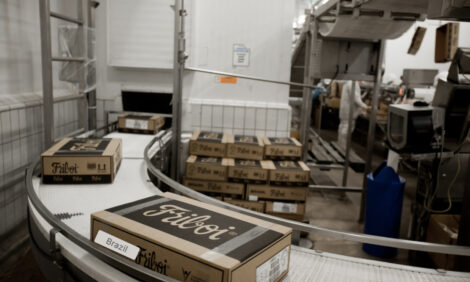



Brazilian Farmers Benefit for Global Grain Slump
BRAZIL - The world needs two bumper crops and according to specialists, only in this way will the prices of agricultural commodities decline, driving away the risk of food insecurity.For Brazil, however, this presents new opportunities according to a report on the Brazil Arab New Agency.
The report says the United Nations Food and Agriculture Organization (FAO) has warned that the United States’ maize and Russia’s wheat crop failures are driving up these commodities’ prices and threatening food security worldwide.
The risk is there and specialists estimate that the world will need at least two bumper crops in the next few years for inventories to be replenished and prices to drop.
On the other hand, poor global agricultural performance is causing Brazilian farmers’ profits to rise sharply.
In Brazil, maize output will be an all-time high, and some of the wheat has been sold even before it has been harvested.
According to Lucilio Alves, a grain researcher at Esalq/USP’s Centre for Advanced Studies in Applied Economics, the maize inventory-to-consumption ratio around the world right now is the lowest since the 1973/1974 crop.
Alves said that 41 per cent of all maize is used as either food or as a food industry input. The commodity is also one of the main raw materials in animal feed manufacturing.
“Right now, the prices of some commodities are higher than they were in 2008, and an eventual food crisis was already being considered back then. It will take two bumper maize crops in order for supply and demand to even out,” he said.
A technical and economic analyst at the Organization of Cooperatives of the State of Paraná (Ocepar, in the Portuguese acronym), the agricultural engineer Robson Mafioletti also believes record-high crops will be required in order to halt prices from hiking and causing food insecurity.
“Right now, maize is selling for an average of US$ 8.50 per bushel and soy is selling for US$ 17.50, which are among the highest-ever prices. According to forecasts, maize may reach US$ 10 and soy may go as high as US$ 20. The world will need two to three very good crops. The demand will not decline enough that it will accommodate crop failure,” he said.
According to Mafioletti, the United States will refrain from producing up to 100 million tonnes this year of maize as a result of the crop failure. Russia, whose wheat output reached 56.2 million tonnes in 2011, is expected to produce 43 million in 2012. The country is expected to export 8 million tonnes of wheat in 2012. Last year’s output was 21 million tonnes. Ukraine also had a wheat crop failure: down from 22 million tonnes in 2011 to 15 million this year.
Wheat prices are on the rise. At the Chicago Mercantile Exchange, the settlement price for futures contracts was US$ 8.96 per bushel as of last Wednesday (22 August). A year earlier, the settlement price of a wheat bushel was US$ 7.35. During the period, the price was up 22 per cent.
According to Modesto Daga, an agricultural engineer and consultant in Cascavel, Paraná, approximately 5.5 million tonnes of wheat will be produced and 11 million tonnes will be consumed this year in Brazil.
The demand is twice as large as the output, and the country, which is the second leading importer of the commodity in the world, following Egypt, will keep on buying. Still, Brazil will export because bullish prices and declining international supply are getting farmers’ spirits up.
“[The state of] Rio Grande do Sul hasn’t even begun harvesting wheat yet, and already one third of the forecasted crop has been sold,” said Daga.
Mafioletti says Brazil may supply markets in North Africa which would buy from Eastern Europe if not for the crop failure.
“In the past, wheat was the foundation of our agriculture, but we are no longer major producers. Now, farmers are exporting to escape the grip of the industry (the mills). We may go back to selling to Egypt, Algeria, Nigeria and Libya, to whom we exported back in 2010,” he said.
Brazil is expected to export 1.9 million tonnes this year. The country exported 2.3 million tonnes in 2011 and 1.3 million tonnes in 2010. “The outlook is interesting when it comes to prices, and they should not drop right away,” Mafioletti forecasts.









